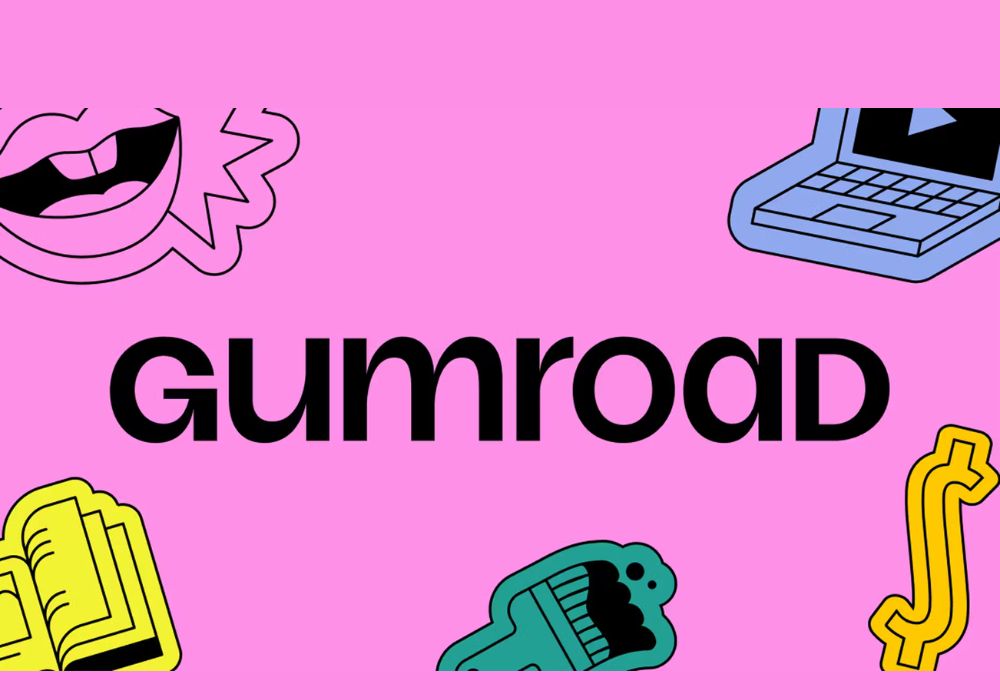It was November 2015, and Sahil Lavingia had to fire everyone. This was a pivotal moment that led to a reevaluation of the Gumroad business model.
He stood before his small, tight-knit team—the people who had bled with him to build Gumroad—and dismantled his own dream. One by one, he let them go. The office lease was terminated. The venture capital fairy tale was over. He was a 23-year-old CEO who had raised $8.1 million from the world’s top investors, and now he was a company of one.
The tech press, which had once celebrated him as a wunderkind, now wrote his obituary. “Gumroad is failing,” they declared.
But as the last employee walked out, a different sound emerged from the ashes: a quiet, steady cha-ching. A sale of a digital product. Then another. The platform wasn’t dead. The creators—the illustrators, writers, course instructors, and musicians—were still there, still earning. In that moment of profound failure, Sahil discovered a radical new purpose: not to build a billion-dollar unicorn for VCs, but to build a sustainable, simple, and powerful engine for the creative middle class.
This is the story of how that “failure” became a quiet revolution.
The Founding Story: From Side Project to Creator Platform
The Founder & The Spark:
Sahil Lavingia was 19 years old, designing products at Pinterest, when he tried to sell a set of his own icon designs. The existing tools were clunky, requiring him to stitch together PayPal, a website builder, and email delivery. The friction was immense. He thought, “What if you could sell a digital product with a single link?” He built a simple prototype in a weekend. He called it Gumroad.
The Initial Idea & Meteoric Rise:
The idea was seductively simple: creators could upload a file, set a price, and get a link to share anywhere. No website needed. It went viral on Hacker News and Product Hunt almost instantly. In its first year, Gumroad processed over $1.6 million in transactions. The validation was undeniable.
The VC Gold Rush & The First Challenge:
Flush with initial success, Sahil raised a $1.1M seed round from top-tier firms like Kleiner Perkins and Max Levchin. He was the talk of Silicon Valley. An $8.1M Series A followed. The mandate was clear: Grow at all costs. He hired a team, moved into a San Francisco office, and started building furiously—adding features, chasing enterprise clients, and expanding the team to 20 people.
The first challenge wasn’t a lack of product-market fit; it was the intoxicating pressure of the VC model itself.
Audience & Positioning: Pivoting to the Creator Middle Class
Initial Target Audience:
Initially, Gumroad was for anyone selling anything digital. This was too broad. They attracted hobbyists and professionals alike, but their messaging was scattered.
The Refined Audience: The Professional Creator.
After the 2015 reset, Gumroad’s focus narrowed laser-sharp. They weren’t for everyone. They were for serious creators for whom their digital products were a primary or significant source of income. This included:
- Writers selling e-books and newsletters.
- Designers selling UI kits and fonts.
- Course instructors teaching niche skills.
- Musicians selling beats and samples.
Value Propositions That Cemented Their Place:
- Radical Simplicity: The core “link-in-bio” model remained idiot-proof. No complex storefronts were necessary.
- Transparent, Creator-First Pricing: A clean 10% transaction fee on all sales. No monthly subscriptions, which was a huge barrier for new creators. This built immense trust.
- Empowerment, Not Patronage: Unlike platforms like Patreon that focus on recurring “support,” Gumroad was a pure, dignified transaction. You create value, someone pays for it directly.
Marketing Platforms & Strategies for Gumroad for Creators
Gumroad’s marketing became a reflection of its founder’s journey: transparent, educational, and community-driven.
Prioritized Platforms:
- Twitter (X): Sahil’s personal account became the de facto face of Gumroad. He shared raw revenue numbers, business struggles, and philosophical musings on the creator economy.
- The Gumroad Blog & Handbook: This became a cornerstone. Instead of generic marketing, they published incredibly valuable, data-driven content for creators. Posts like “What kind of earnings can you expect from selling your book?” used anonymized Gumroad data to set realistic expectations.
- Product Hunt & Hacker News: They maintained a strong presence on these communities, not with hype, but with substantive product updates and philosophical essays.
Content & Messaging That Worked:
The most successful messaging was transparent and empowering.
- “Here’s how much our top creators make”: They publicly celebrated their creators’ success, which in turn attracted new creators. For example, they frequently highlighted that their top 10 creators earned over $500,000 annually.
- “Build a $100k/year solo business”: This became a central narrative, positioning Gumroad as the tool for achieving solopreneurship and financial independence.
Failed Campaigns & Lessons:
The pre-2015 era was the failed campaign. The attempt to pivot upmarket to enterprise clients and build complex features diluted their core value. The lesson was brutal: Trying to be everything to everyone makes you nothing to anyone. They recovered by ruthlessly focusing on their core user: the individual creator.
Technologies & Analytics:
Gumroad’s stack is as lean as its team. The core is a robust, home-built payments and delivery platform. Analytics are focused on creator success: they provide sellers with clear data on conversion rates, customer geography, and traffic sources, all built directly into the product dashboard.
Growth Milestones: Gumroad for Creators’ Quiet Leaps
Gumroad’s growth wasn’t driven by splashy campaigns, but by strategic, product-led leaps.
- The Introduction of Pay-What-You-Want (2016): This single feature was a game-changer for creators launching new products, allowing them to build an audience by offering a “name your price” option.
- The Launch of Product Bundles (2017): Creators could now bundle e-books, courses, and design resources, significantly increasing their average order value.
- The “Discover” Feature (A Pivot, Then a Pivot Back): Gumroad briefly experimented with a centralized marketplace to help with discovery. It failed because it went against their decentralized, creator-owned-audience model. They learned that their role was to be a tool, not a gatekeeper.
- The Membership & Subscription Model (2020): Allowing creators to sell recurring subscriptions (e.g., for newsletters or exclusive content) tapped into the booming subscription economy, locking in long-term creator loyalty.
Challenges & Failures: The Phoenix Narrative of Gumroad for Creators
The Near-Death Experience (2015):
As detailed, the need to lay off the entire team and face public “failure” was the defining challenge. The recovery was methodical. Sahil became a solo operator, focusing solely on maintaining the platform, fixing bugs, and slowly, profitably, growing the user base. He cut all expenses not directly related to serving existing creators.
Competitor Actions:
The rise of competitors like Teachable (for courses) and Ko-fi (for donations) forced Gumroad to double down on its core differentiator: simplicity and a low barrier to entry. While others built “walled gardens,” Gumroad championed the “link anywhere” freedom.
The Pivot to Profitability:
By 2016, the new, lean Gumroad was profitable. It was no longer a “venture-scale” business, but it was a healthy, multi-million dollar company serving hundreds of thousands of creators. This became their new, powerful story: profitability over hype.
Becoming a Household Name: Transparency & Trust
Gumroad never achieved “household name” status with the general public, but it became a cult classic and a household name within the global creator community. This was achieved through:
- The “Transparency” Virality: Sahil’s public essay, “Reflecting on My Failure to Build a Billion-Dollar Company“, went massively viral. This raw honesty resonated deeply with creators who also faced struggle and rejection. It built a level of trust no polished ad campaign ever could.
- Cultural Moments: The platform grew organically during key cultural shifts: the “Passion Economy” boom, the rise of Substack (with many writers using Gumroad to sell supplemental e-books), and the COVID-19 lockdowns, which pushed millions to seek online income.
- Long-Term Loyalty Strategy: Loyalty was built on a foundation of empowerment and respect. Gumroad saw itself as a partner to creators, not their boss. Features were built based on direct creator feedback, and the company’s financial alignment was clear: they only made money when their creators did.
Financial & Operational Insights: The Numbers Tell the Story
- Funding:
- 2011: $1.1M Seed Round (Kleiner Perkins, etc.)
- 2014: $8.1M Series A (Kleiner Perkins, Accel, etc.)
- Post-2015: Bootstrapped and profitable. No further funding.
- Revenue Milestones:
- 2012: Processed $1.6M in creator sales.
- 2016: Back to profitability as a solo operation.
- 2021: Surpassed $100M+ in total sales processed for creators.
- 2023: The platform was facilitating millions in sales monthly, with creators collectively earning over $10M per month.
- Operational Shift:
The shift was seismic: from a 20-person, office-based, growth-at-all-costs startup to a small, fully remote, product-obsessed team focused purely on sustainability and creator success.
Lessons Learned: The Gumroad Playbook for Modern Founders
- Product-Market Fit is Everything, But It Can Be Simple. You don’t need to solve a billion-dollar problem. Gumroad solved a simple, painful problem for a specific group of people.
- Venture Capital is a Tool, Not a Goal. Raising VC is not a measure of success. It comes with massive expectations that may not align with your vision or market reality.
- Embrace Radical Transparency. Sharing your struggles and numbers can build more trust and loyalty than any amount of polished marketing.
- “Small” is a Valid Business Model. A profitable, sustainable business that serves its customers well is a greater success than a “unicorn” that burns out and dies.
- Focus on Your Core User. The moment you try to expand beyond the audience that loves you most, you risk losing everything.
- Your Lowest Point Can Be Your Brand’s Most Powerful Asset. Gumroad’s “failure” and subsequent Phoenix-like rise became the core of its authentic, compelling brand story.
The Sound of Success
Today, the sound in Gumroad’s “virtual office” isn’t the frantic ping-pong of a Silicon Valley startup. It’s the quiet, cumulative hum of thousands of transactions—a writer in Nairobi earning her first $100 for a short story, a designer in Ohio quitting her day job because her UI kit sales took off, a musician in Seoul building a sustainable income.
Sahil Lavingia didn’t build the billion-dollar company he set out to build. He built something perhaps more meaningful: a timeless tool that empowers people to turn their passion into a paycheck. In the noisy, hype-driven world of tech, Gumroad stands as a quiet testament to a different path—one built not on disruption, but on dignity.





